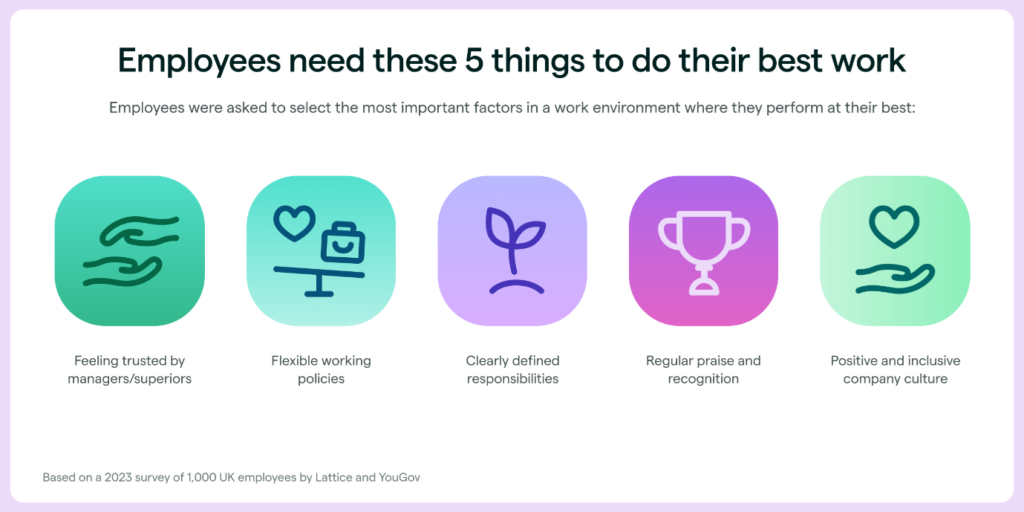10 HR Trends and Predictions for UK SMEs in 2024
 As every new year purports to launch us into a new world of work, it is important that HR teams seek to stay ahead of the curve. Until AI becomes powerful enough to predict the future for us (it’s getting close!), HR Optimisation have rounded up our thoughts on the most important HR trends and predictions for SME businesses in 2024.
As every new year purports to launch us into a new world of work, it is important that HR teams seek to stay ahead of the curve. Until AI becomes powerful enough to predict the future for us (it’s getting close!), HR Optimisation have rounded up our thoughts on the most important HR trends and predictions for SME businesses in 2024.
2024 is perhaps shaping up to be HR’s most impactful year yet….but the challenge to accomplish it all is ever difficult, especially for SME’s with lean internal teams.
1 . A need to keep upskilling Staff with AI widening the global skills gap
There is an increasing role for employers to be the educators. As AI threatens entry- level positions and universities lose their allure, incoming workers will be looking to employers to train them for the roles of the future. “With AI, it’s conceivable that students might now find themselves learning skills in college that are obsolete by the time they graduate. (Indeed)”
The World Economic Forum predicts that 44% of workers’ skills will be disrupted between 2023 and 2028—up nine percentage points from its last five-year projection.
There’s no question that it’s a tough time to be entering the workforce. Standard entry-level positions are being dissolved at the hands of AI, and even the jobs we once thought to be immune to tech’s influence, like those in the creative field, are now proving to be under threat.
Soft skills—once thought to be a basic requirement—are becoming a worker’s greatest asset. The machines will become very good at being machines in the years ahead, so we need to ensure our leadership can be extremely good at being humans again. Thus, As AI’s technical prowess reaches new heights, it’s things like leadership, social intelligence, and effective communication that will help humans come out on top. Employees will be looking for their employers to give them good quality training and experiences in this area.
The impact of AI on resourcing people with required skills at this rapid pace of change is going to be pretty big. As Mark Eloitt, CFO Mercer has said “What was a war for talent is increasingly becoming a war for skills. Companies are pivoting much more to looking at ‘What are the skills that we need?’ Instead of identifying the specific opportunities, they’re addressing specific skills gaps.”
2. Performance and engagement will be HR’s highest priorities
If you are stuck choosing between driving performance and building a great place to work – the tough reality is a successful business needs both.
Supporting both initiatives comes from the philosophy that highly engaged employees do their best work. (Remember quiet quitting? That was only a year ago, and companies are still finding that low engagement leads to poorer business outcomes.) An environment that’s conducive to great performance requires clear expectations, flexible work policies, clear communication, a sense of trust from managers, and regular recognition — all of which contribute to employee engagement, according to a 2023 survey by Lattice and YouGov.
Employees rely on work environments that are conducive to trust and flexibility.
Here are a few things SME HR teams can do to help employees do their best work in 2024:
- Give employees clarity on company goals, growth opportunities, and performance expectations.
- Ensure every employee has relevant SMART objectives to help employees understand how they should best contribute and how their work connects to the big picture.
- Use engagement survey results to identify areas of the company that need attention and support from HR and leadership.
- Remember to check-in on how well your company is balancing performance and wellbeing.

3. Employees are putting flexibility first and will be demanding increasing work boundaries to ‘re-charge’
No other generation has demanded boundaries quite like Gen Z. After witnessing generations before them burn themselves out to give work everything they have at work only to receive little in return, incoming employees are refusing to treat burnout like a badge of honour. In fact, in a 2023 survey, soon-to-be-grads noted work-life balance as their number one concern about the work landscape.
As employees reassess their relationship with work, rising demand for clear boundaries and better protections is predicted to spur a modern-day labour movement. Work-to-live is the new mentality, and flexibility is the new expectation.
With employees making it clear that their mental health comes first, superficial wellness solutions will no longer suffice. They are expecting employers to restructure work in a way that actually allowed people to get enough rest at home? This is the kind of mindset shift that will set the standard for healthy work-life boundaries going forward. Unlimited holidays, 4 day working weeks and early finish Fridays are likely to become more and more common.
But this flexibility is not without potential return for employers. One Ernst & Young study showed that for every additional 10 hours of vacation time that employees took, their year-end performance improved 8%. Companies that encourage time off also retain talent for longer, which keeps turnover costs down.
“Rest is not the absence of performance. It’s part of performance. How do we think about rest not to recharge after we burn out, but to ensure our employees stay charged over time?” Gartner.
4. Connection quest – a need for more intention connection
Fewer in-person interactions, less time in offices and shrinking employee ecosystems have shaken the traditional cultural experience. We’re simultaneously more connected and more isolated than ever before. With our world no longer built to facilitate face-to- face interactions, businesses are stepping in to fill the void with new social spaces, community concepts, and apps for intentional companionship. The connection economy is booming, and our collective well-being is at stake.
For culture to succeed in a hybrid world, leaders must work intentionally to align and connect employees to it. Alignment and connectedness operate like the left and right sides of your brain — rational and emotional. Both contribute to culture’s impact on outcomes, such as performance and retention. Connectedness suffers in a hybrid world, however, without intentional efforts to cultivate it. We’ll write more on this in a future article.
5. Embedding DE&I
Diversity, equity, and inclusion (DEI) isn’t a box to check, rather it’s an ongoing commitment to designing a work environment that makes everyone feel valued and respected. As we move beyond tokenism, DEI will become a shared responsibility that’s increasingly going to be built into core business processes in the best organisations through 2024.
6. HR is joining the AI movement.
Artificial intelligence swept news headlines throughout 2023, meaning implementation of the latest AI tech will be on HR leaders’ minds (and in their budgets) in 2024. Whilst it remains omni-present to ensure algorithmic bias and intellectual property infringement is mitigated in AI, it may be a powerfully ally in process optimisation.
In HR, we’re often seen as late adopters of technology. This is our moment to change that narrative and allow AI to make us even more efficient, faster, and better at our jobs so we can focus on being human and bringing empathy and other human centric skills to HR.
Developing policies for employee use, training teams to manage the company’s intellectual property, and ensuring humans review and edit anything AI tools generate are just the start.
7. Money out loud
Money is being taken off the do-not-discuss list. From salary transparency to financial therapy, culture is getting candid about the role money plays in our lives. The end of secrecy will mark the start of a more honest, equal, and holistic approach to all things finance. Employees in 2024 are predicted to want to know their financial outlook, including that of progressional roles with far more ferocity in 2024. We are also seeing an increasing trend in amending the traditional monthly payroll approach to in some cases daily or weekly payments.
8. Enabling managers to lead and avoid overwhelm
HR and Executive teams rely heavily on managers to keep a pulse on employee engagement, provide goals and document progress for their teams, and act as a set of eyes and ears for employee concerns about burnout, compensation, attendance, performance and more.
That’s quite a tall order for managers who must also balance their roles and expectations. In 2023, managers were at higher risk of burning out than individual contributors were, with Lattice reporting that 66% of team-level managers reporting some or significant levels of burnout and Gartner consulting concluding that 75% of HR leaders say their managers are overwhelmed by the growth of their job responsibilities. Supporting our managers by providing better skills development programs, new tools and technologies to boost productivity and more robust well-being programmes is only part of the solution – Companies need to look to evolve the job itself by resetting role expectations, building the manager pipeline and removing procedural hurdles. HR can help by providing access to just-in-time resources such as guides to having effective 1-1s, salary negotiation templates, and tips for providing meaningful feedback.
In organisations where managers are supported, empowered, and given the tools to succeed, “employees are 2.8 times more likely to provide positive net promoter scores, 2.5 times more likely to describe their company as highly innovative, and 1.6 times more likely to be highly engaged,” according to MIT Sloan Management Review research.
9. Change fatigue will loom over employee performance.
Change fatigue is a general feeling of apathy or resignation toward company changes by employees, especially when too much change takes place in a short period.
Over the past three years, the rapidly evolving work environment has taken a toll on morale, wellbeing, and turnover.
Layoffs, acquisitions, restructuring, and other changes are constants in business, but they were especially prevalent this past year, with 41% of HR teams reporting layoffs at their company in Lattice’s 2024 State of People Strategy Report. For the most part, these difficult changes were handled poorly:
- 59% of HR professionals said they felt the C-suite falls short in providing enough support for addressing low employee morale following a layoff.
- Another 62% and 63% said that executives don’t provide enough support with training managers or with redefining roles, respectively.
Redundancies aren’t the only source of change fatigue. Organisational restructuring, cultural transformations, return-to-office changes, and adoption of new technology systems can also drastically affect employees’ daily lives and understanding of their role at work. The average employee experienced 10 planned enterprise changes in 2022, according to Gartner, up from two in 2016.
Gartner’s research shows the impacts of change fatigue are not only damaging to employee morale, but also directly affect performance, productivity, and other business outcomes. When they experienced change fatigue, surveyed employees reported:
- 42% less intent to stay
- 30% lower levels of trust
- 27% less sustainable performance
- 27% less responsiveness
- 22% less discretionary effort
- 17% less enterprise contribution
Yet Gartner also found in another survey that only 20% of HR leaders are equipped to spot change fatigue, meaning it must become a key part of people teams’ listening strategies and employee surveys in 2024.
Here’s what HR can do:
- Communicate the risks of change fatigue as well as the sense of loss, to the senior leadership team before, during and post big changes are implemented at the company.
- Ensure managers are equipped to discuss the changes with their teams by providing talking points or scheduling all-hands meetings
- Before and after any big changes, pay close attention to pulse survey data for an accurate account of morale, engagement, and performance needs.
10. Employees will expect more empathy, recognition and trust-building from executives.
The road ahead undoubtedly includes the essential, frontline workers / junior support who form the backbone of numerous industries. Recognising their work is a critical first step. The second, according to Octanner research, is transforming appreciation into action. Once leaders have a deep comprehension of employees’ experiences, challenges, and aspirations, they can translate it into tangible support and ensure each person feels a sense of belonging, fulfillment, and connection.
This merging of recognition and empathy is a strategic necessity for attracting and retaining talent. Organisations that truly see, hear, and value employees can turn empathy from a buzzword into an impactful, teachable practice and create environments where people know they’re valued and respond with loyalty and great work.
A regular line of communication — all-hands calls, town hall meetings, and regular face time between employees and executives — is crucial for ensuring that employees feel supported and heard, but the topics of communication are just as important.
In 2024, leadership teams will have to stay attuned to news and world events, and help manage the leadership response to those events in a genuine, meaningful, and truthful way.
Research on empathy in business from Ernst & Young found that:
- More than half of employees (52%) believe their company’s efforts to be empathetic toward employees are dishonest.
- The majority of employees (86%) say empathetic leadership helps boost morale while 87% believe empathy is a key part of creating an inclusive workplace.
Similarly, Gartner research this year also shows that mutual mistrust is at an all time high with only about 50% of employees trusting their organisation.
To maintain cohesion, people teams will need to help repair the employee- leadership relationship. Once leaders have a deep comprehension of employees’ experiences, challenges, and aspirations, they can translate it into tangible support and ensure each person feels a sense of belonging, fulfillment, and connection.
HR can help by:
- Demonstrating to executives that low morale and engagement affect business outcomes.
- Identifying organisational values that drive internal and external communications.
- Working with the SLT on guidelines for commenting on news and world events in the workplace.
Concluding remarks
Of course, 2024 will be full of surprises, too. In the meantime, the best thing HR teams can do to be prepared is to survey employees about their needs, and work closely to align with company leadership about the path forward.
The most important thing to remember is that proactive changes needn’t be dramatic to be effective. Seemingly minor shifts can lead to major success if companies keep employees at the forefront of decision-making. A people-centered approach will foster cultures where employees feel fulfilled and ultimately drives better business outcomes.
If you would like help with people and culture strategic change please do reach out to us at Hello@HROptimisation.co.uk

Hannah Powell
Categories
- Coaching (9)
- CSR (1)
- Culture (1)
- Culture & Engagement (33)
- Diversity and Inclusion (16)
- Employment law (38)
- Inspiration (12)
- Leadership (14)
- Learning & Development (7)
- Recruitment (12)
- Reward (9)
- Self-development (2)
- Tips & tricks (11)
- Uncategorized (18)
- Welfare and Wellbeing (26)
